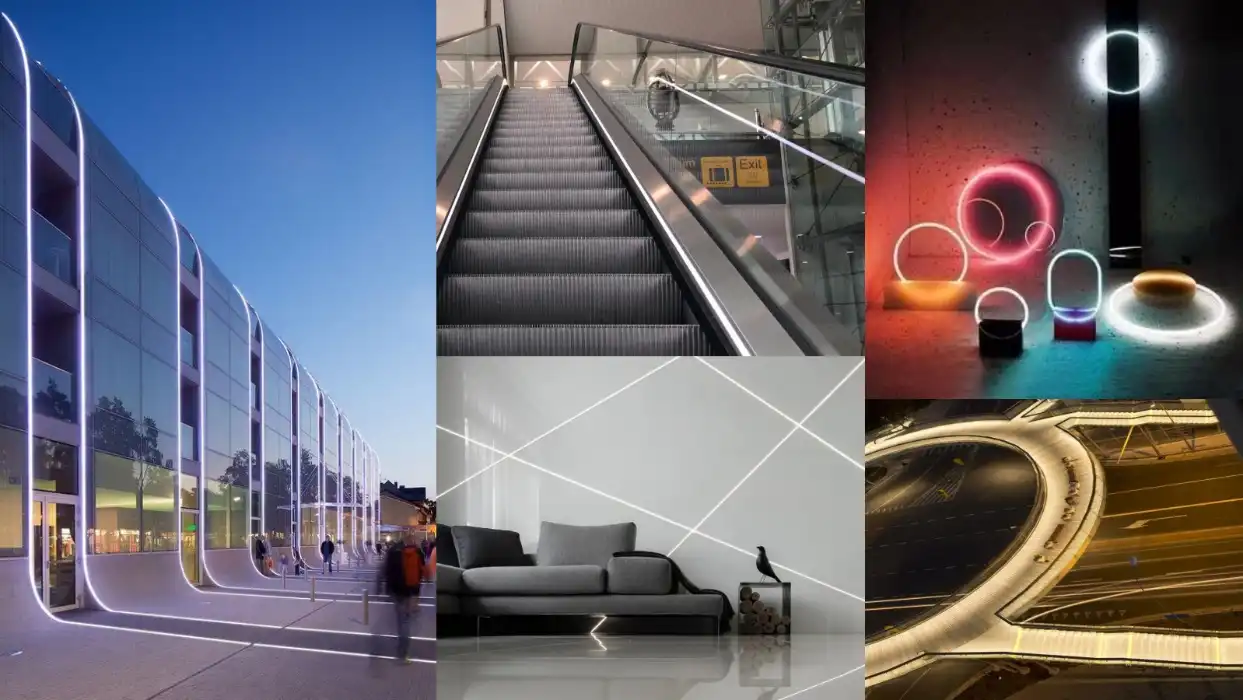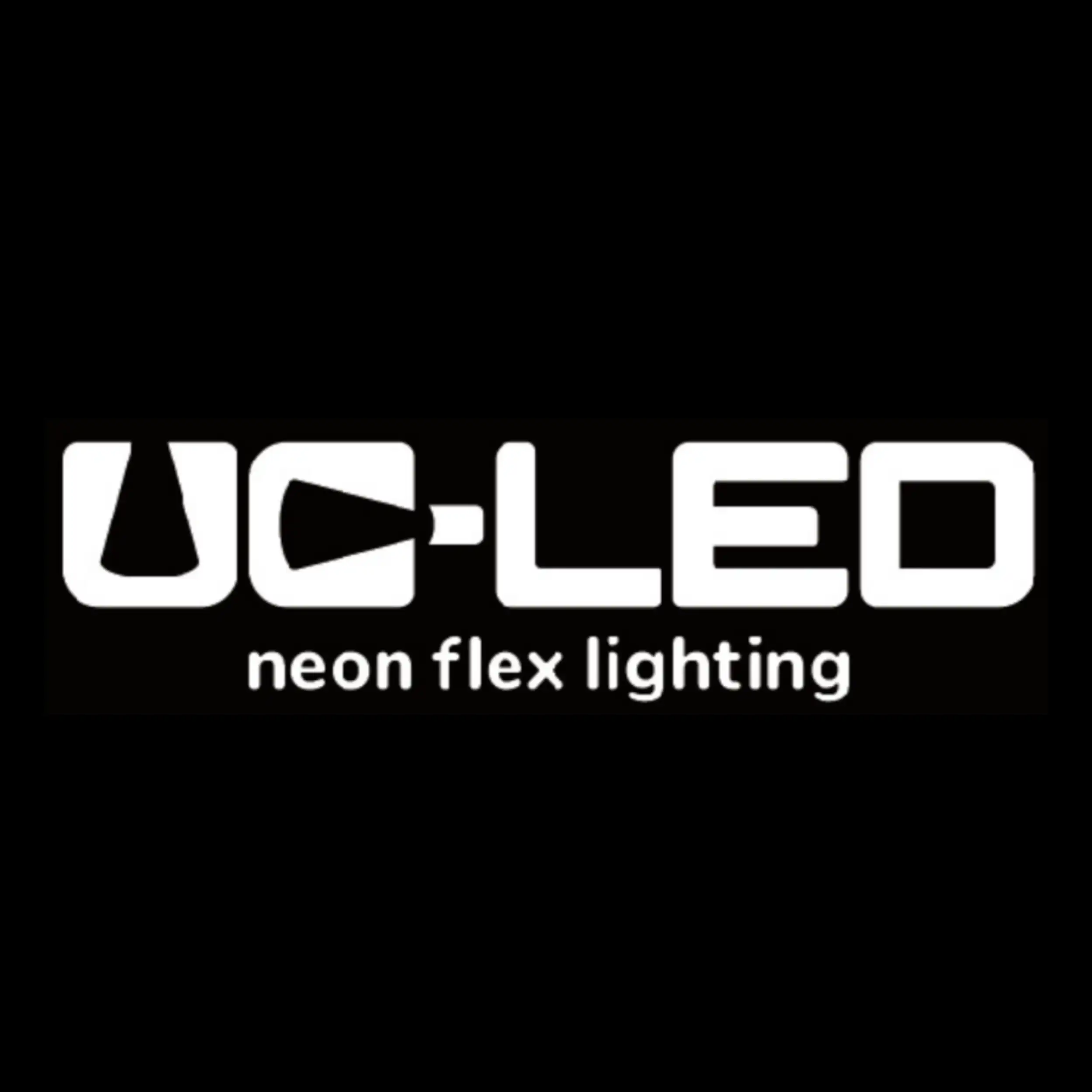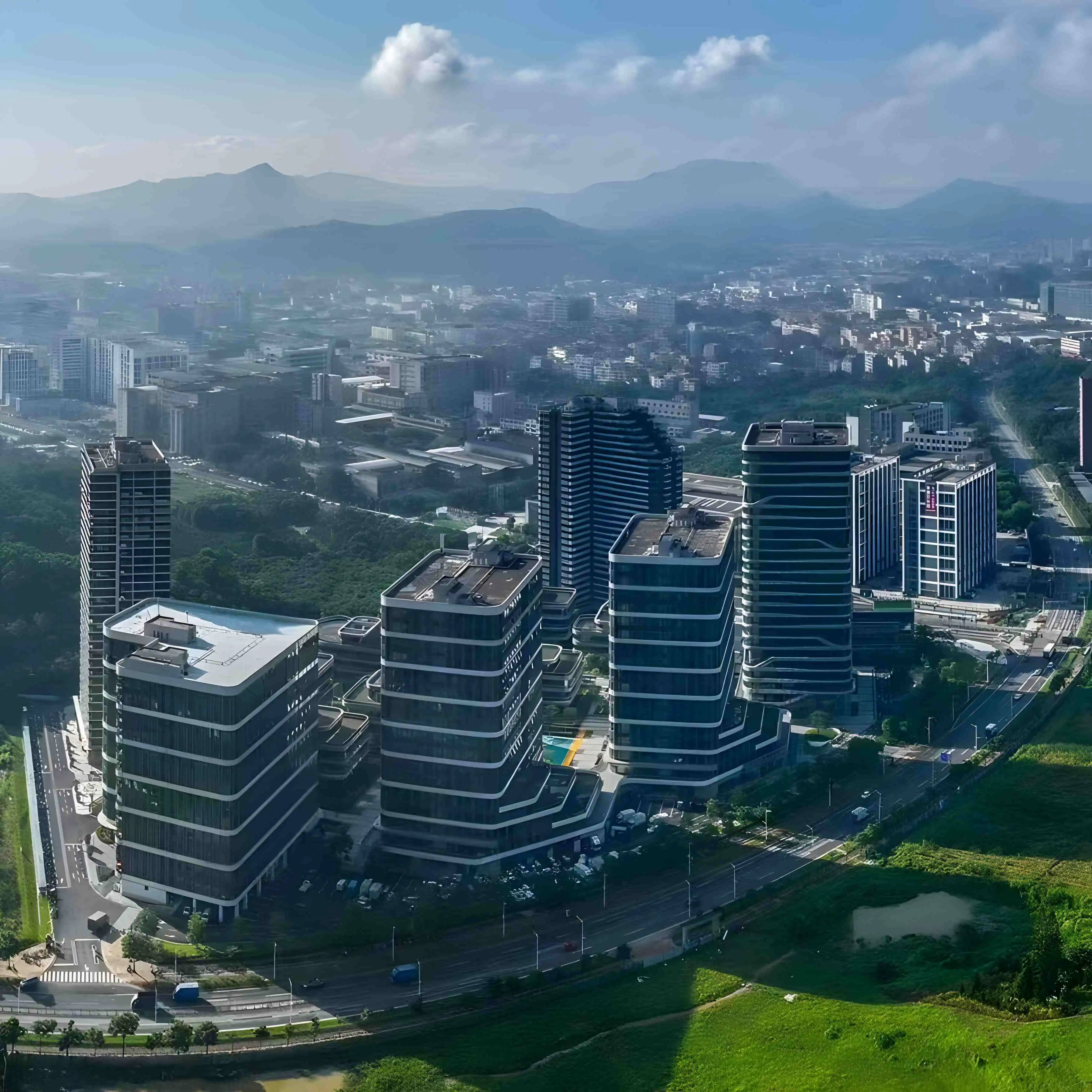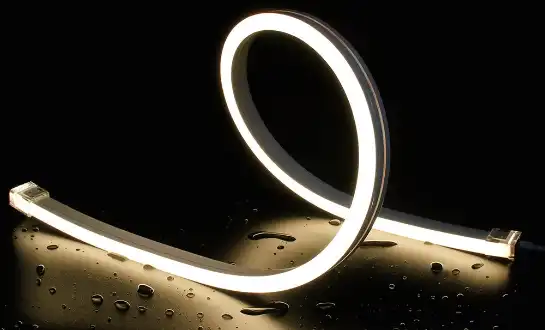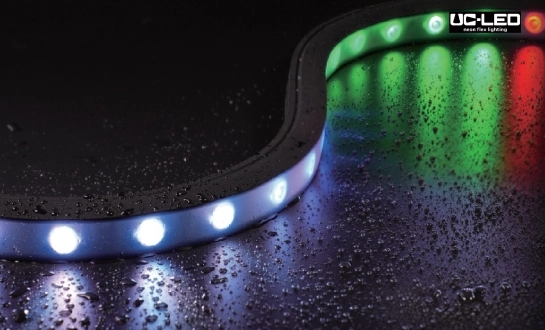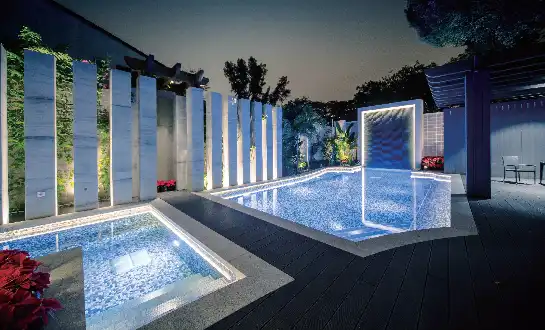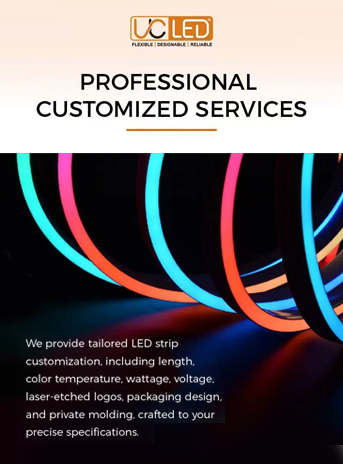Introducing Neon Flex: 230V vs 24V Systems
What is Neon Flex?
Neon flex is a modern, LED-based lighting solution that mimics the appearance of traditional neon lights. It consists of a flexible LED strip encased in a durable silicone or PVC housing, creating a continuous, vibrant line of light. Unlike traditional neon, which uses gas-filled glass tubes, neon flex is more energy-efficient, durable, and versatile.
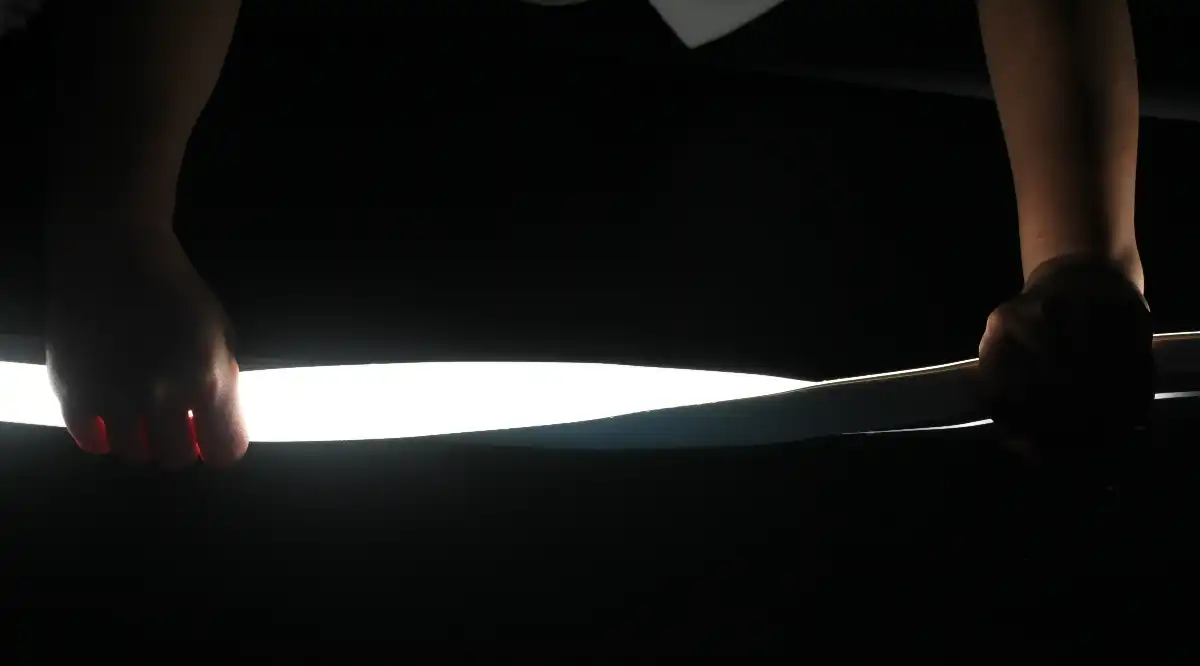
230V Neon Flex: Characteristics and Applications
230V neon flex operates directly from mains voltage, eliminating the need for separate power supplies in many cases. This high-voltage system offers several advantages:
- Longer run lengths: Capable of illuminating extensive areas without voltage drop
- Simplified installation: Requires fewer power supplies and connection points
- Cost-effective for large projects: Reduces overall system complexity and components
- Ideal for commercial and outdoor applications: Suitable for building outlines, signage, and architectural lighting
However, 230V systems also have some considerations:
- Requires professional installation due to high voltage
- Less flexible for intricate designs
- May need additional safety measures in certain environments
24V Neon Flex: Features and Uses
24V neon flex operates on low voltage, offering a different set of benefits:
- Enhanced safety: Lower voltage reduces electrical risks
- Greater flexibility: Easier to bend and shape for complex designs
- DIY-friendly: Simpler to install for small-scale projects
- Suitable for indoor and outdoor use: Versatile for various applications
Considerations for 24V systems include:
- Shorter maximum run lengths compared to 230V
- Requires power supplies (transformers) for operation
- May need multiple power supplies for larger installations
Factors to Consider When Choosing Between 230V and 24V Neon Flex
Installation Environment and Scale
The choice between 230V and 24V neon flex largely depends on the installation environment and project scale:
- Large-scale outdoor projects: 230V neon flex is often preferred for its ability to cover extensive areas with fewer power supplies.
- Indoor residential or small commercial spaces: 24V neon flex offers greater safety and ease of installation.
- Complex architectural designs: 24V systems provide more flexibility for intricate patterns and curves.
Safety Considerations
Safety is paramount when choosing lighting systems:
- 230V systems require professional installation and may need additional safety measures in public spaces.
- 24V systems are inherently safer due to their low voltage, making them suitable for areas with frequent human contact.
- Both systems should be installed according to local electrical codes and regulations.
Energy Efficiency and Operating Costs
While both 230V and 24V neon flex use LED technology, their energy efficiency can differ:
- 230V systems may have slightly lower energy losses over long runs due to reduced voltage drop.
- 24V systems might require multiple power supplies, potentially increasing overall power consumption.
- The difference in energy efficiency is often negligible for smaller installations.
Customization and Design Flexibility
The ability to create unique designs is a crucial factor:
- 24V neon flex offers greater flexibility for intricate designs and tight bends.
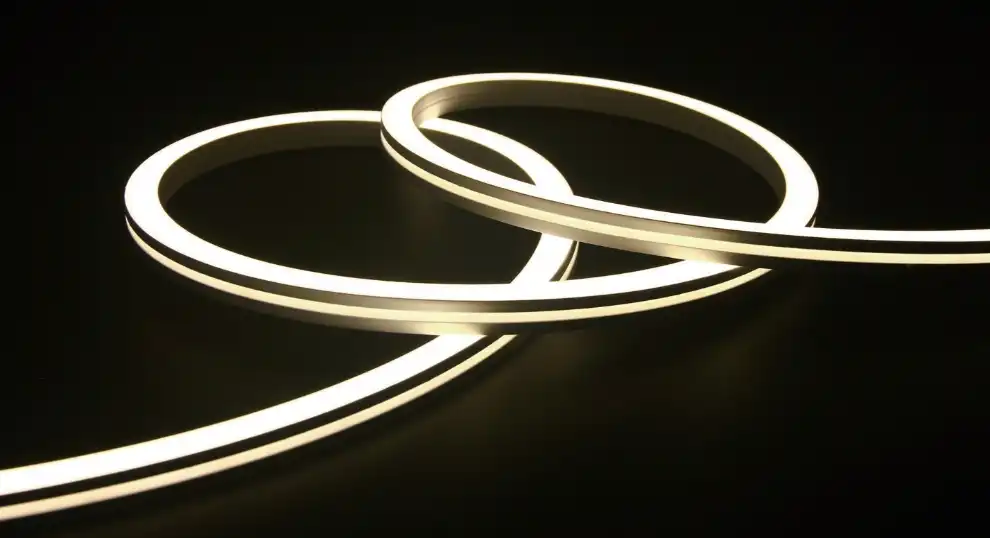
- 230V systems are better suited for straight runs and large-scale lettering.
- Consider the minimum bend radius and available colors when planning your design.
Making the Right Choice for Your Project
Assessing Your Specific Needs
To choose between 230V and 24V neon flex, consider these factors:
- Project scale: Large commercial vs. small residential
- Installation location: Outdoor facade vs. indoor decor
- Design complexity: Simple outlines vs. intricate patterns
- Safety requirements: High-traffic areas vs. limited access zones
- Installation expertise: Professional electricians vs. DIY enthusiasts
Consulting with Lighting Professionals
For complex projects, it's advisable to consult with lighting professionals:
- Seek advice from experienced lighting designers or electricians
- Discuss your project requirements and constraints
- Consider requesting a mock-up or sample installation
Future-Proofing Your Installation
Think long-term when selecting your neon flex system:
- Consider potential expansion or modification of your lighting design
- Evaluate the availability of replacement parts and accessories
- Assess the durability and warranty of the chosen system
Conclusion
Choosing between 230V and 24V neon flex depends on a multitude of factors unique to your project. 230V systems excel in large-scale, commercial applications where long run lengths and simplified wiring are paramount. Conversely, 24V neon flex shines in smaller, more intricate installations where safety and design flexibility take precedence. By carefully considering your project's scale, safety requirements, design complexity, and installation environment, you can make an informed decision that will result in a stunning, efficient, and long-lasting lighting solution. Remember, both options offer the captivating glow and versatility of neon flex, bringing your lighting vision to life with modern LED technology.
FAQ
Can I mix 230V and 24V neon flex in the same installation?
It's not recommended to mix voltages in a single installation due to different power requirements and safety considerations.
Is 230V neon flex more energy-efficient than 24V?
The energy efficiency difference is minimal. Both use LED technology, but 230V may have slightly lower losses over long runs.
Can I install 24V neon flex myself?
While 24V systems are more DIY-friendly, it's always best to consult or hire a professional for electrical installations to ensure safety and compliance with local codes.
Expert Neon Flex Solutions | QUAN HE
At QUAN HE Lighting Co., Ltd., we specialize in premium linear lighting solutions, including cutting-edge neon flex technology. Our state-of-the-art 5,000m² factory is equipped with advanced SMT assembly lines and strict quality control processes. We offer expert OEM and ODM customization services, ensuring your unique lighting vision comes to life. Trust our decade-long experience and innovative R&D team to deliver superior quality, sustainable neon flex solutions for your projects. Contact us at Linda@uc-led.com for professional guidance on choosing the perfect neon flex for your needs.
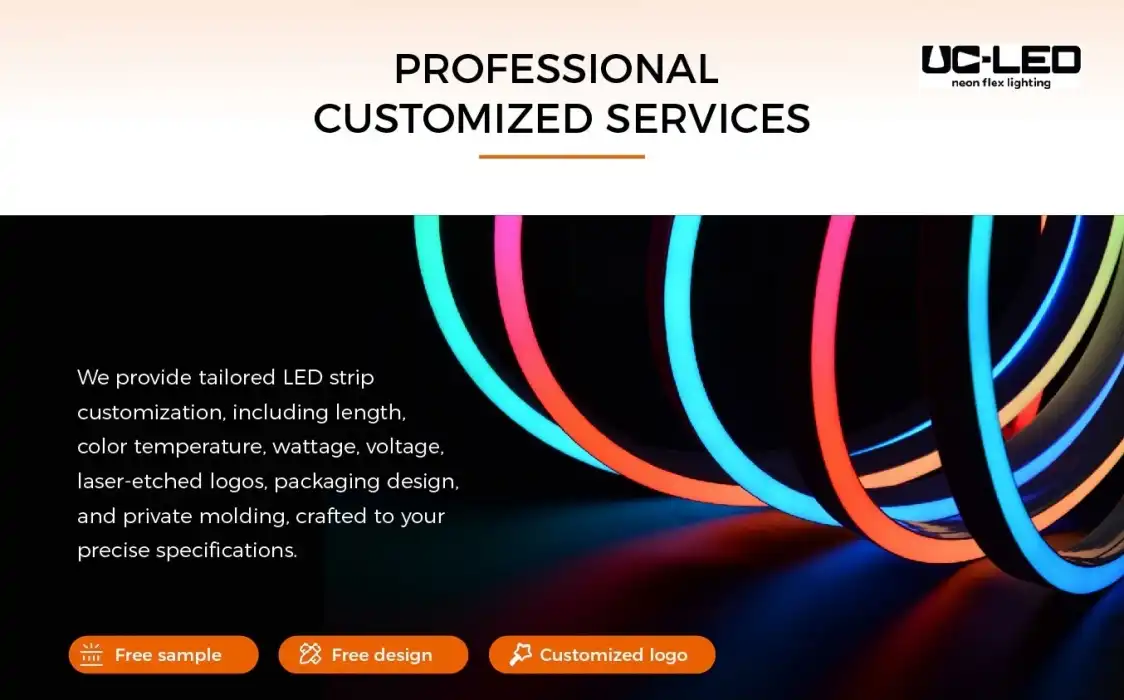
source: LED Light
References
1. Johnson, M. (2022). "Advanced Lighting Technologies: A Comprehensive Guide to Neon Flex Systems." Illumination Engineering Society Journal, 45(3), 78-92.
2. Smith, A., & Brown, R. (2021). "Comparative Analysis of 230V and 24V LED Lighting Systems in Commercial Applications." Energy Efficiency in Building Design, 18(2), 210-225.
3. Lee, S. (2023). "Safety Considerations in High and Low Voltage Decorative Lighting Installations." International Journal of Electrical Safety, 9(1), 15-30.
4. Wilson, T., & Garcia, L. (2022). "Energy Efficiency and Cost Analysis of Modern Neon Flex Lighting Solutions." Sustainable Building Technologies, 7(4), 355-370.
5. Chang, H. (2023). "Innovative Applications of Flexible LED Technologies in Architectural Lighting Design." Architectural Lighting Review, 12(2), 45-60.
